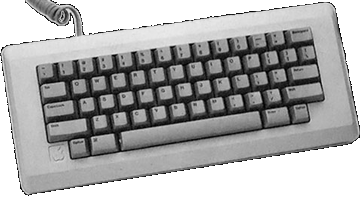Power Macintosh G3

Essentials
Family: PowerMac G3/G4/G5
Codename: Gossamer
Gestalt ID: 510
Minimum OS: 8.0
Maximum OS: 10.2.8
Introduced: November 1997
Terminated: January 1999
Processor
CPU: PowerPC 750 "G3"
CPU Speed: 233/266/300/333 MHz
FPU: integrated
Bus Speed: 66 MHz
Register Width: 32-bit
Data Bus Width: 64-bit
Address Bus Width: 32-bit
Level 1 Cache: 32 kB data, 32 kB instruction
Level 2 Cache: 1 MB backside, 1:2
ROM: 4 MB
RAM Type: PC66 DIMM
Minimum RAM Speed: 66 MHz
Onboard RAM: 0 MB
RAM slots: 3
Maximum RAM: 768 MB
Expansion Slots: 3 PCI, 1 personality (filled)
Video
VRAM: 2 - 6 MB (2 MB onboard, one socket)
Max Resolution: all resolutions supported
Video Out: DB-15
Storage
Hard Drive: 4 GB
ATA Bus: EIDE
Floppy Drive: 1.4 MB SuperDrive
Zip Drive: optional
Optical Drive: 24x CD-ROM
Input/Output
ADB: 1
Serial: 2 Mini DIN-8
SCSI: DB-25
Audio Out: stereo 16 bit mini
Audio In: stereo 16 bit mini
Speaker: mono
Networking
Ethernet: 10Base-T
Miscellaneous
Power: 240 Watts
Dimensions: 15.2" H x 9.6" W x 17.8" D
Weight: 33.1 lbs.

Notes
The Desktop case for the PowerMac G3 weighed 22 lbs., and had the following dimentions: 6.3" H x 14.4" W x 16.9" D
Announced in November 1997, The PowerMac G3 knocked the 9600/300 out of the fastest-mac-on-the-planet mark by nearly 10%. Based on a newly designed motherboard (code-named "Gossamer") which ran at a blazing-fast 66 MHz, the G3 was the first Apple-branded Mac to ship with the new PPC 750 Processor. The 750 was co-designed by IBM and Motorola, and was the first processor capable of using a "backside" cache, which could communicate directly with the processor at extremely high speeds.
The G3 came in either a mini-tower case (similar to that of the 8600 & 9600, but shorter) or a 7300-style desktop case, and operated at either 233 or 266 MHz, with a 512 kB backside cache operating at 117 and 133 MHz, respectively. The PowerMac G3 Desktop, available at 233 or 266 MHz came with 16-bit Audio In and Out on a separate "personality" card and an internal Zip drive (The Gossomer motherboard was so small that the main HD could be mounted on the floor of the case, leaving room for the Zip, and an additional half-height drive).
The G3 MiniTower model, which initially was only available at 266 MHz, had a different personality card, which offered all the features of the desktop card, plus 4 MB of VRAM (expandable to 6 MB) and S-Video In and Out. The Gossamer motherboard had 3 industry-standard SDRAM slots, allowing for 384 MB of RAM, but due to the height restrictions of the case, the G3 Desktop could not hold 128 MB modules, giving it a maximum of 192 MB (Low-profile modules have since been released). In early 1998, Apple made a 233 MHz tower model available, and added a host of new add-on features for all models including a 4 GB fast/wide SCSI disk, and a faster graphics card.
In March 1998, Apple added a 300 MHz option on all built-to-order machines, as well as a dual-SCSI configuration, with RAID software, and an optional DVD-ROM drive. (a 3rd-party solution were required for MPEG-2 video playback.) A 333 MHz version was made available in September 1998. The PowerMac G3 was discontinued in January 1999, when it was replaced by the "Blue" G3.
Picture Credits:
Apple, Inc.
John Greenleigh/Flipside Studios
